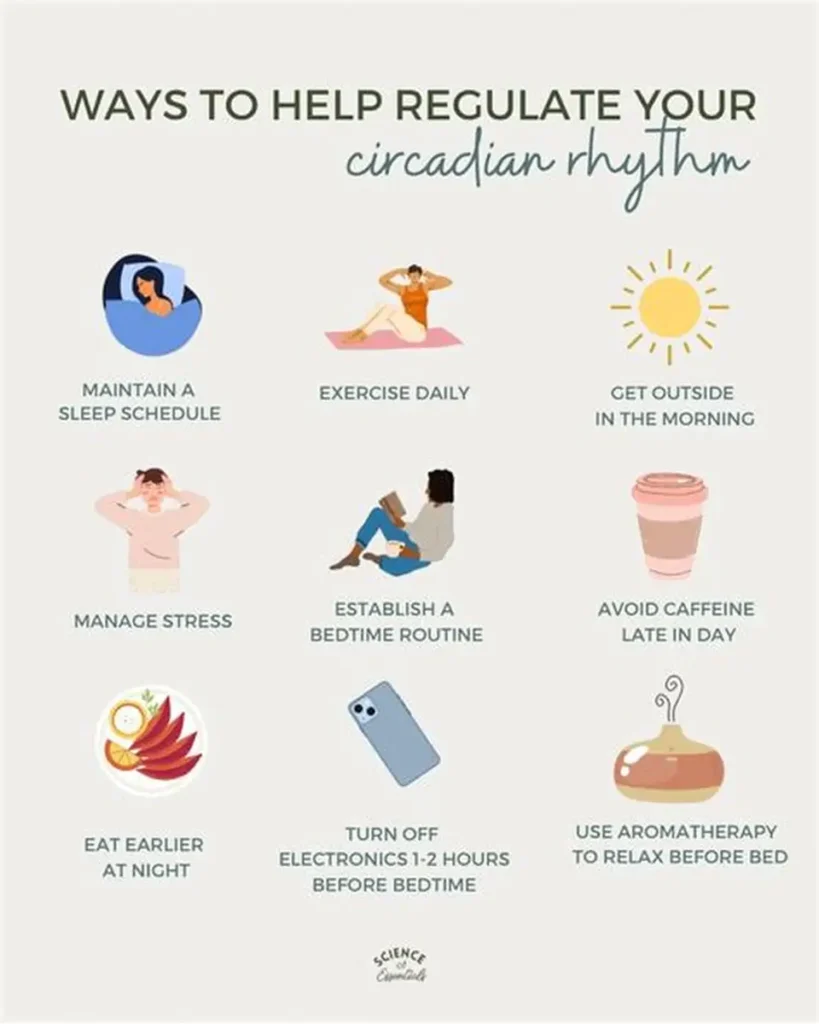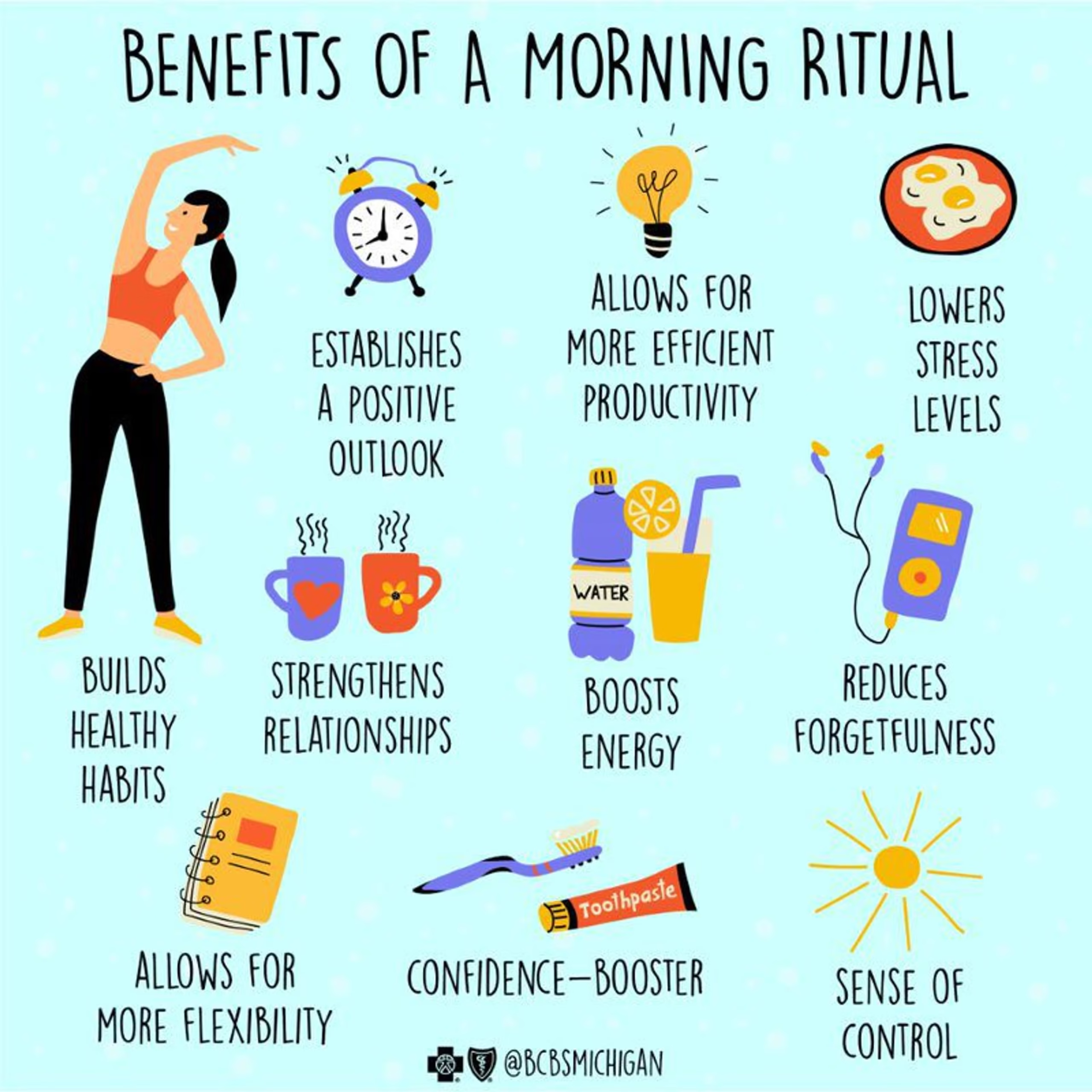If you’ve ever felt more energized in spring or craved hearty meals in winter, you’re not alone. Learning how to sync your health routine with the seasons is one of the most powerful, natural ways to optimize your well-being. From workouts to sleep cycles and nutrition, your body thrives when it aligns with nature’s rhythms. In this guide, we’ll show you how to adapt your lifestyle month-by-month so you feel balanced and strong all year long.
Embracing how to sync your health routine with the seasons doesn’t require major life changes—it’s about subtle shifts that honor your environment and biology. Let’s explore what that looks like.
Spring: Awaken Your Body and Reboot Energy
Spring is the season of renewal, making it the perfect time to reboot your health goals. Understanding how to sync your health routine with the seasons begins with embracing lighter foods, detoxing naturally, and reintroducing movement into your daily life.
- Opt for green vegetables like asparagus and spinach that support liver detox.
- Try brisk walks or jogging outdoors to sync with longer daylight hours.
- Focus on breathwork and meditation to release stagnant winter energy.
Looking for nature walks and trails to energize your spring routine? Explore Barton Creek Greenbelt in Austin for hiking and natural reset opportunities.
Also check out this research on the seasonal effects of light on mood for deeper insights.
Summer: Maximize Sunlight and Movement
When learning how to sync your health routine with the seasons, summer is all about vitality, hydration, and cardiovascular fitness. With longer days and more social activity, summer presents the best opportunity to energize your routine with intensity and joy.
- Eat hydrating foods like cucumbers, watermelon, and leafy greens.
- Switch workouts to early mornings or evenings to avoid heat exhaustion.
- Focus on outdoor sports or beach workouts for fun and vitamin D exposure.
Try paddleboarding or trail running at Lady Bird Lake for a full-body outdoor workout.
For diet support, see our article on 7 Potent Fat-Burning Superfoods to stay lean during the summer season.

Fall: Strengthen Immunity and Ground Your Routine
As the air gets cooler, your body needs grounding foods and immune support. Knowing how to sync your health routine with the seasons means transitioning your diet and workouts to strengthen resilience and promote emotional balance.
- Eat root vegetables like beets, carrots, and squash for grounding energy.
- Focus on strength training and flexibility exercises to stabilize joints.
- Begin immune-boosting habits like elderberry syrup, ginger tea, and probiotics.
Get your seasonal produce from SFC Farmers’ Market in Austin to keep your fall diet aligned with nature.
Check this study on seasonal immune response to understand why fall preparation matters.
Winter: Restore, Reflect, and Rebuild
During colder months, understanding how to sync your health routine with the seasons requires focusing on rest, recovery, and warming foods. It’s a time to prioritize mental health and internal nourishment.
- Incorporate soups, lentils, and warm herbal teas to support digestion and circulation.
- Lower workout intensity—swap HIIT for restorative yoga or strength maintenance.
- Journal and create vision boards to align your goals for the new year.
Warm up indoors at Black Swan Yoga Austin with winter-friendly yoga sessions for balance and reflection.
Learn more about seasonal affective disorder and light therapy to support emotional wellness during winter.
Benefits of Syncing with the Seasons
When you master how to sync your health routine with the seasons, the benefits extend beyond fitness. You’ll notice improved mental clarity, balanced hormones, stronger immunity, and deeper emotional alignment with your environment.
Some benefits of syncing with the seasons include:
- Reduced inflammation and oxidative stress
- Better sleep and circadian rhythm regulation
- Seasonally attuned emotional well-being
For more holistic strategies, visit our article Radiant Health Rituals: 12 Holistic Habits to amplify your year-round wellness game.
Where to Begin in Your City
Whether you live in Austin or beyond, here are some places where you can begin applying how to sync your health routine with the seasons in real life:
- Austin Farmers Market – Get seasonal produce and natural remedies.
- Zilker Park – Ideal for seasonal outdoor workouts and mental clarity.
- The Herb Bar – Stock up on seasonal herbs and teas aligned with winter and fall needs.
Embrace Nature’s Blueprint for Your Health Routine
In 2025, aligning your health routine with the rhythms of nature isn’t just trendy—it’s transformational. As the seasons shift, so do your body’s nutritional needs, circadian rhythms, and energy levels. Instead of following a rigid wellness script year-round, mastering seasonal wellness empowers you to evolve with the environment. By syncing your health routine with each season’s unique offerings, you can maximize energy, strengthen immunity, and enhance mental clarity.
Summer Synergy: Elevate Your Health Routine with Heat
Summer in cities like Austin, Texas invites an invigorating shift in your health routine. Long daylight hours and warmer weather increase your body’s need for hydration, antioxidants, and cooling foods. Incorporate water-rich fruits like watermelon and cucumbers, and opt for early morning workouts to avoid mid-day heat. Adjusting your health routine to match summer’s intensity can prevent burnout and maintain momentum during peak fitness months.
Fall Reset: Ground Your Health Routine for Renewal
As autumn brings crisp air and shorter days, your health routine should pivot toward grounding habits. This is the season to nourish with warm meals, root vegetables, and immunity-boosting spices like turmeric and ginger. Incorporate yoga, journaling, or mindfulness to mentally prepare for the colder months ahead. Your fall health routine is all about restoration and reflection—a time to slow down, recalibrate, and build resilience.
Winter Restoration: Strengthen Immunity Through Your Health Routine
Winter demands a health routine focused on warmth, recovery, and immunity. Emphasize sleep quality, vitamin D supplementation, and hearty meals like soups and stews. In colder cities, incorporating indoor workouts or even cold exposure therapy (safely) can enhance metabolism and mood. Your winter health routine should help you combat seasonal affective changes and emerge stronger in spring.
Spring Awakening: Reboot Your Health Routine with Energy
Spring is nature’s signal to detox and reawaken your health routine. Longer daylight triggers hormonal shifts, increasing motivation and metabolic function. Focus on leafy greens, high-fiber meals, and outdoor activity. It’s the perfect time to refresh your fitness goals and implement sustainable wellness habits. Your spring health routine should feel light, energizing, and revitalizing—setting the tone for a powerful year.
Global Trends Influencing Seasonal Health Routines
Health-conscious cities around the world—from San Francisco to Denver—are now embracing seasonal living. Modern wellness brands are also adapting seasonal frameworks into their offerings. According to a 2025 report by the Global Wellness Summit, syncing your health routine with nature’s calendar is a rising global trend reshaping personal wellness.
Tech That Helps You Optimize Your Health Routine Seasonally
With the rise of AI-driven wellness apps, syncing your health routine with the seasons has never been easier. Apps like MyCircadianClock and ChronoShift analyze daylight, sleep, and mood to recommend tailored seasonal actions. Even smart wearables now offer seasonal shift reminders, helping you adjust your health routine in real time.
Related Resources
- 21 Transformative Fitness Hacks Every Ambitious Beginner Must Conquer
- Radiant Health Rituals: 12 Holistic Habits That Restore, Renew, and Rejuvenate
- National Library of Medicine – Seasonal Health Patterns

Explore Health-Centric Cities
Final Thoughts: Embrace the Flow of Nature
Understanding how to sync your health routine with the seasons empowers you to work with your body—not against it. Nature provides cues that, when followed, result in less stress, more vitality, and a more intuitive relationship with health.
Whether you’re just starting out or looking to refine your wellness blueprint, tuning into seasonal shifts is a simple yet profound strategy to elevate your daily life. Remember, the seasons aren’t something to resist—they’re your ultimate wellness guide.
Stay connected with more transformational health insights at ihoxi.xyz.
Frequently Asked Questions
FAQs: Master Your Seasonal Health Routine
1. What is a seasonal health routine?
A seasonal health routine is a strategic wellness plan designed to align your daily habits with the natural rhythms of the environment. It incorporates seasonal eating, exercise variations, sleep optimization, and lifestyle modifications that change as the climate and daylight hours shift. This adaptive approach enhances vitality, strengthens immunity, and promotes mental clarity throughout the year by working with—rather than against—nature’s cycles.
2. Why should I change my health routine with the seasons?
Adapting your health routine to seasonal changes supports your body’s innate ability to maintain balance and resilience. Each season affects your metabolism, immune system, mood, and energy differently. By tuning into these fluctuations, you can tailor your diet, sleep, movement, and stress relief practices to reduce illness risk, manage inflammation, and enhance overall well-being in a proactive, evidence-based way.
3. How can I adapt my winter health routine?
Winter health routines should emphasize nourishment, warmth, and immune fortification. Incorporate warming foods like soups, stews, and herbal teas; focus on resistance training or yoga to stay active indoors; and prioritize deep, restorative sleep. Vitamin D supplements and mindfulness can also help combat seasonal affective disorder. Aligning your winter health routine this way builds internal heat and keeps your body strong during cold, dark months.
4. What’s the best health routine for spring?
Spring is a natural time for renewal, so your health routine should focus on lightening up. Choose detoxifying foods such as leafy greens, citrus fruits, and cruciferous vegetables. Transition your workouts to more cardio-focused movement like brisk walking, jogging, or dance. Mental clarity can be enhanced through journaling or digital detoxing. A spring health routine invites a fresh start for both body and mind.
5. How does summer affect my health routine?
Summer demands a cooling, hydrating health routine to offset the heat and longer daylight hours. Focus on hydration-rich fruits like watermelon and cucumber, and opt for lighter meals to avoid sluggishness. Schedule workouts in the early morning or evening when temperatures are lower. Your health routine in summer should also include sun protection, magnesium intake to support electrolytes, and social activities to lift your spirit.
6. What’s the ideal health routine for fall?
Fall is a transitional season, and your health routine should prepare you for winter. Begin eating grounding foods like squash, beets, and warm grains. Slow down your movement slightly, and increase strength-based workouts. Boost immunity with vitamin C and zinc, and introduce more routine into your sleep schedule. Fall is the time to reinforce self-care and build protective habits that support long-term wellness.
7. How can I keep my health routine consistent throughout the year?
Consistency comes from flexibility and habit-stacking. Create a core health routine that includes non-negotiables like hydration, sleep, and movement, and adapt the details seasonally. Use habit trackers, meal planners, or calendar reminders to stay organized. Set realistic goals for each quarter of the year, and give yourself grace to adjust without guilt. Consistency lies in honoring change—not avoiding it.
8. Is sleep a key part of a seasonal health routine?
Yes, sleep is a cornerstone of any effective health routine, especially when aligned with the seasons. As daylight shifts, your circadian rhythm adjusts, influencing hormone production, mood, and energy. In winter, you may need more sleep due to longer nights, while summer may call for slightly less. Honoring these cycles by adjusting your sleep schedule can significantly boost immune function and cognitive performance.
9. How does seasonal eating support my health routine?
Seasonal eating supports your health routine by delivering the freshest, most nutrient-dense foods tailored to your body’s current needs. Spring produce cleanses the body, summer fruits hydrate, fall root vegetables ground you, and winter foods insulate and nourish. Additionally, seasonal foods are more eco-friendly and cost-effective, making them a smart and holistic foundation for optimal nutrition all year round.
10. Can exercise routines change with the seasons?
Absolutely. Your exercise plan should be an evolving part of your health routine. Use spring and summer for more outdoor cardio and high-energy activities. Transition to resistance training, Pilates, or yoga during fall and winter when the body naturally slows down. This variety keeps workouts exciting, aligns with energy cycles, and prevents plateaus and burnout throughout the year.
11. How can I use herbs in my health routine?
Herbs are powerful allies for seasonal health. In winter, ginger and turmeric build warmth and immunity. In summer, mint and chamomile cool and soothe. Spring welcomes detox herbs like dandelion and nettle, while fall benefits from thyme and cinnamon for digestion. Incorporating herbal teas, tinctures, or culinary herbs into your health routine enhances vitality and complements seasonal transitions beautifully.

12. Are mental health practices part of a seasonal health routine?
Yes, mental wellness is a vital part of a complete health routine. As seasons change, so can mood and motivation. Combat winter blues with light therapy and meditation. In spring, embrace journaling and intention-setting. Summer calls for joyful social connection and play, while fall invites introspection and gratitude. Matching your mental health practices to the emotional energy of each season keeps you centered and emotionally fit.
13. How do seasonal allergies affect a health routine?
Seasonal allergies can derail even the most consistent health routine, especially in spring and fall. Combat allergies with anti-inflammatory foods, air purifiers, and nasal rinses. Consider adding quercetin, omega-3s, and local honey to your diet. Maintaining hydration, reducing stress, and modifying outdoor activities on high pollen days can help you stay on track with your goals during allergy-prone months.
14. Should hydration change with the seasons?
Hydration is essential year-round, but your health routine should adjust fluid intake based on climate. In summer, increase your water, electrolyte, and fruit intake to replace what’s lost through sweat. In winter, opt for warm herbal infusions, soups, and broths to maintain internal hydration without chilling your body. Always listen to thirst cues and adapt based on activity levels and weather.
15. How can I involve my family in a seasonal health routine?
Turn your health routine into a family ritual. Plan seasonal cooking nights, create outdoor traditions like weekend hikes or garden walks, and schedule group workouts. Teach kids about seasonal produce at local markets. Involving your family creates accountability, strengthens bonds, and ensures everyone benefits from seasonal wellness habits while having fun together.
16. Can technology support my health routine?
Technology can be a fantastic tool in your seasonal health routine. Use fitness trackers, sleep monitors, habit-tracking apps, or even meal planners tailored to seasonal foods. You can also sync calendars for sun exposure, moon cycles, or circadian-friendly routines. These digital tools offer insights, motivation, and data-driven adjustments to fine-tune your year-round wellness journey.
17. How do holidays impact my seasonal routine?
Holidays can challenge your health routine with indulgent meals, disrupted sleep, and emotional stress. To stay balanced, plan ahead with nutrient-dense meals, rest days, and mindfulness exercises. Embrace moderation over restriction, schedule non-food-based celebrations, and remember that a flexible, guilt-free approach helps maintain your momentum while still enjoying the festive spirit.
18. What role does sunlight play in a seasonal routine?
Sunlight is crucial to your health routine because it regulates melatonin, serotonin, and vitamin D levels. In summer, embrace the sun early in the day and wear protection when UV is high. In winter, seek natural light exposure or consider light therapy. This keeps your mood, sleep, and immune system functioning optimally across the year.
19. How can I build a routine around seasonal fitness trends?
Stay inspired by seasonal fitness trends like beach bootcamps, winter spin classes, or fall hiking clubs. These trends provide variety, boost motivation, and offer new social opportunities. Incorporate trending movements that align with your fitness level and goals to refresh your health routine with each season, avoiding stagnation and promoting year-round engagement.
20. Are seasonal cleanses beneficial to a routine?
Seasonal cleanses can support your health routine when done mindfully. Spring is ideal for detox-focused resets using whole foods, fiber, and herbal teas. Post-holiday cleanses in winter or early January can help eliminate excess and reboot digestion. Avoid extreme protocols—instead, aim for gentle, sustainable practices that enhance clarity and energy without deprivation.
21. How can I track the success of my seasonal routine?
Track your routine success by monitoring metrics like sleep quality, energy, mood, digestion, and immunity. Use tools such as journals, wearable fitness trackers, or wellness apps. Reflect at the end of each season on what worked and what didn’t. This ongoing feedback loop empowers you to evolve your routine and build a truly sustainable, seasonal wellness plan tailored to your unique needs.
21. How can I track the success of my seasonal routine?
Tracking the success of your seasonal health routine is essential for long-term consistency and improvement. Utilize a wellness journal to document daily habits, mood, energy levels, and sleep quality. Fitness trackers or apps can monitor metrics like heart rate, step count, and calorie intake, offering a visual snapshot of progress. Reflecting monthly on changes—whether in digestion, emotional balance, or physical performance—allows you to refine your health routine based on what’s truly working for your body during each season.
22. Can seasonal skincare be part of a holistic routine?
Absolutely. A comprehensive routine isn’t just internal—it also includes your skin, the body’s largest organ. Seasonal skincare adjusts to environmental factors such as humidity in summer or dryness in winter. In warmer months, your health routine should include lightweight, non-comedogenic sunscreens and hydrating serums, while colder months call for richer moisturizers and barrier-repairing balms. Syncing your skincare to the seasons protects your skin’s health and reinforces overall wellness.
23. How do seasonal routines support hormonal balance?
Your health routine can play a pivotal role in balancing hormones by adapting to the body’s seasonal needs. For instance, more sleep and grounding foods in winter support cortisol regulation, while outdoor activity and fresh produce in summer promote serotonin and Vitamin D synthesis. These natural hormonal shifts benefit from a tailored health routine that includes nutrition, rest, light exposure, and stress-reducing practices to keep the endocrine system functioning optimally year-round.
24. Is there a connection between your gut and your seasonal routine?
Yes, the gut is deeply interconnected with every aspect of your routine, particularly when it aligns with seasonal changes. Each season brings different prebiotic and probiotic foods that enhance gut flora—think fermented vegetables in winter or fiber-rich berries in summer. A gut-friendly health routine includes diverse, seasonal produce, mindful eating, and stress-reducing practices, all of which support digestion, mood regulation, and immunity through your gut-brain axis.
25. Can I start a mid-season, or do I need to wait for the next one?
You can absolutely begin a routine mid-season. There’s no perfect starting point—what matters most is taking the first step. Starting during a current season allows you to begin tailoring your habits to immediate environmental conditions. Gradually shifting your sleep schedule, dietary patterns, and fitness approach to match the season’s demands can create instant improvements. Over time, you’ll develop an intuitive understanding of how your health routine evolves with nature’s cycles, creating lasting harmony.






